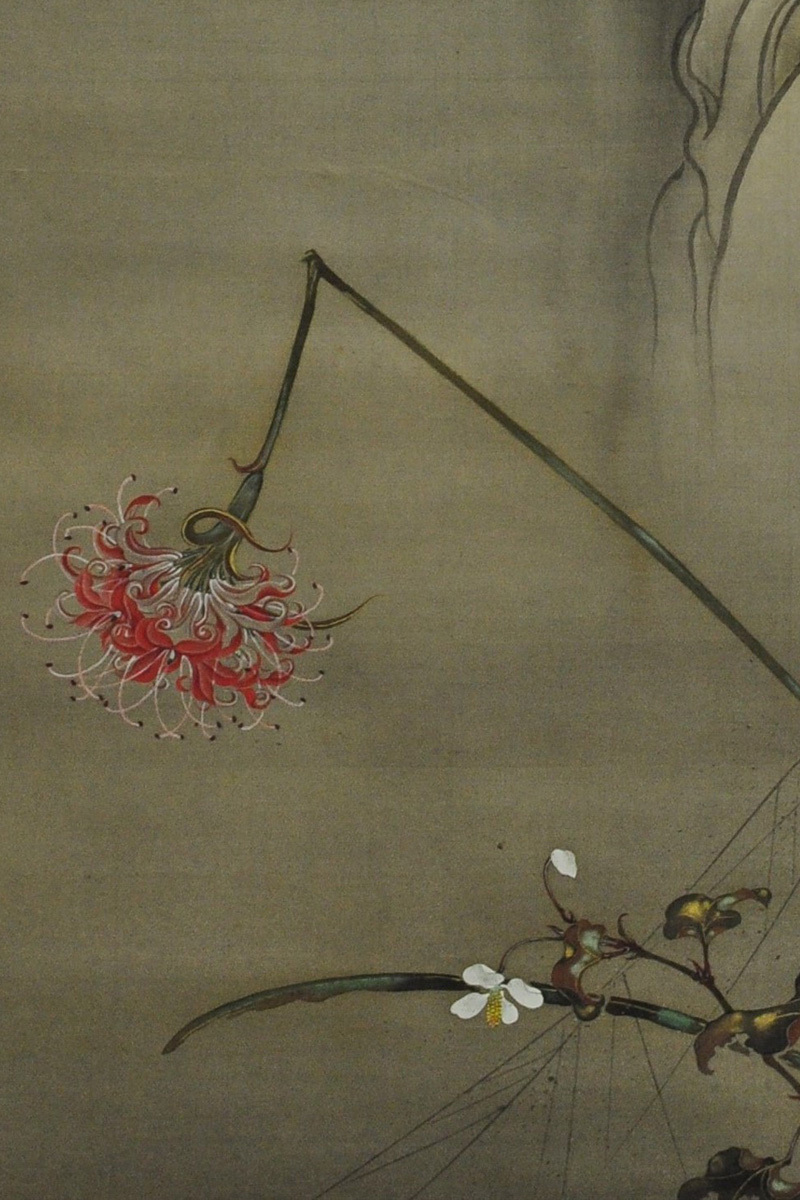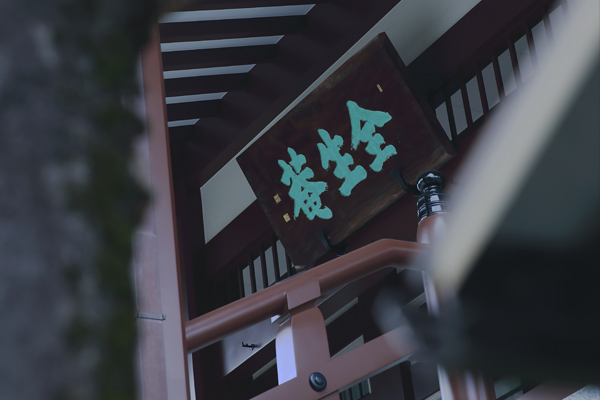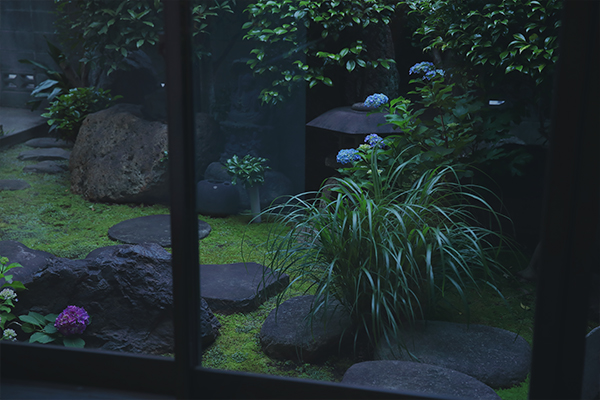円山応挙や伊藤晴雨といった著名な画家たちによる幽霊画の傑作を楽しむ。
Feature | 2025.7.24
全生庵にある数々の幽霊画のなかから四点を紹介。
夏の夜中に、お独りでお楽しみください。
Presenting ghostly masterworks by Maruyama Ōkyo,Itō Seiu, and others.
Four standout scrolls from the Zenshō-an collection—best viewed alone, on a quiet summer night.

Ghost Figure; Maruyama Ōkyo
円山応挙「幽霊図」
存在感の薄い美しい女性が立っている。立ってはいるが足はなく、儚い雰囲気を纏っている。そのことがないと、彼女を生身の人間だと思うかもしれない。「写生画」の大家といわれる円山応挙が描いた「幽霊図」。足のない幽霊を描き始めたのは応挙だといわれていて、全生庵のこの絵もそうなっている。絵自体におどろおどろしさはなく、それどころか気品すら感じられる。しかし、長く見つめているとこちらの魂を持っていかれそうな、そんな不安を覚える。応挙の幽霊図は全生庵のものを含めて世の中に三作あるといわれ、ひとつは青森県弘前市久渡寺に、もうひとつはカリフォルニア大学バークレー校に所蔵されている。希少な応挙の作品を全生庵で鑑賞することができる。
A pale, ethereal woman stands in silence—but she has no feet. Without that one detail, she could be mistaken for the living.This ghost portrait, by Maruyama Ōkyo—master of shaseiga (sketching from life)—may be one of the earliest depictions of a ghost without feet, a style that became iconic. Graceful, not grotesque, it quietly unsettles, as if it might draw your soul away.Only three of Ōkyo’s ghost scrolls survive: one at Zenshō-an, —at Zenshō-an, Kudōji in Hirosaki, and UC Berkeley. Seeing one at Zenshō-an is a rare privilege.
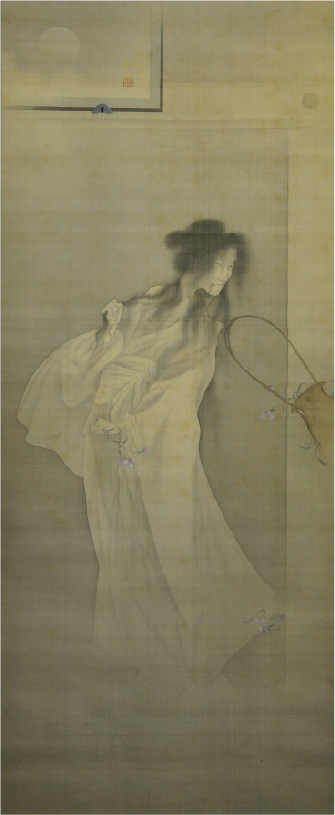
The Flower Basket and the Ghost; Matsumoto Fūko
松本楓湖「花籠と幽霊」
幕末から大正時代にかけての尊皇家であり歴史画の大家であった松本楓湖。ここに描かれている女性の形相の、そら恐ろしいこと。鋭い目で相手をにらみ、自分の髪を握りしめ、また口にくわえた力のこもった様子からは途方もない怒りが感じられる。女性の傍らでは、乱暴に投げ出された花籠がひしゃげ、花がこぼれ落ちようとしている。どこをとっても気迫にあふれた絵は、しかし全体としては静寂が漂い、その違和感が恐ろしさを増幅させている。ちなみに楓湖の墓所は全生庵にある。お盆の頃、この世に帰ってきた作者とともに、お堂でひっそり、「花籠と幽霊」を鑑賞するのもいいかも知れない。
Matsumoto Fūko, an imperial loyalist and noted painter of historical scenes from the Bakumatsu to Taisho eras, brings chilling intensity to this piece. The woman’s expression is terrifying—sharp eyes, a face contorted with fury. She clenches her own hair in both hand and mouth, her posture radiating a staggering rage. Beside her, a flower basket lies crushed—the blooms inside spilling out. The painting brims with raw emotion, yet its stillness amplifies the unease, making the quiet all the more disturbing.Incidentally, Fūko’s grave is at Zenshō-an. Might he himself return during Obon, silently gazing at the scroll he once painted?
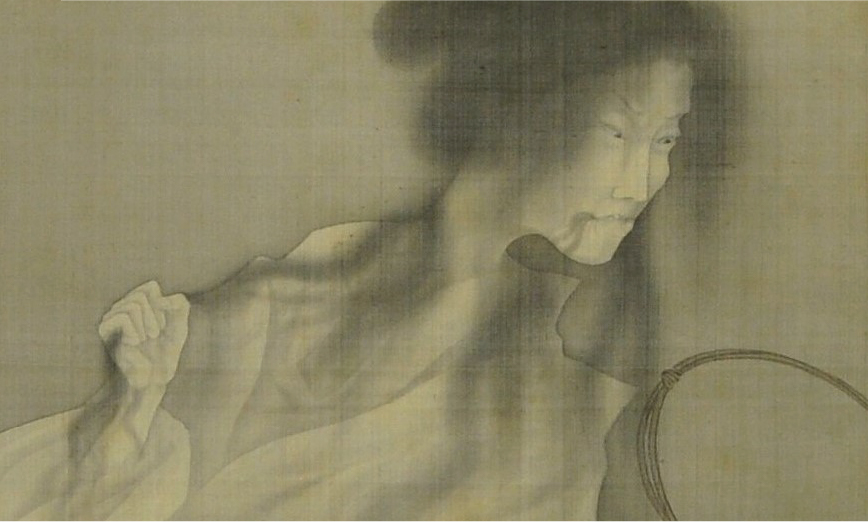

The Breast-Enoki Ghost Tale; Itō Seiu
伊藤晴雨「怪談乳房榎図」
この幽霊画は三遊亭円朝作の怪談「乳房榎(ちぶさのえのき)」を題材にした作品。怪談のなかの一場面にある、滝に放り込まれた我が子を救うために幽霊となって現れる父親の姿を描いている。乳飲み子は彩色され温かみがあり、幽霊となった父親にはモノトーンに暗赤色の血糊のような色をつけ冷淡に。その相反するイメージが作品に深みをもたらせている。さらに父親の表情には恐怖や苦しみ、憎しみといった複雑な感情が滲みでていて、見るものの感情を揺さぶる。伊藤晴雨の卓越した技術と表現力が光るこの作品は、江戸時代の幽霊画のなかでも人気のある一幅。
Based on San’yūtei Enchō’s ghost tale Chibusa no Enoki, this painting captures a spectral father rescuing his infant son from a waterfall. The child glows with warmth in soft color, while the ghostly father is rendered in cold monochrome, dark crimson evoking blood. The contrast heightens the scene’s intensity—his face etched with fear, anguish, and hatred, stirring the viewer to the core.A masterwork of Itō Seiu’s artistry and emotional power, this remains one of the most cherished ghost scrolls of the Edo tradition.
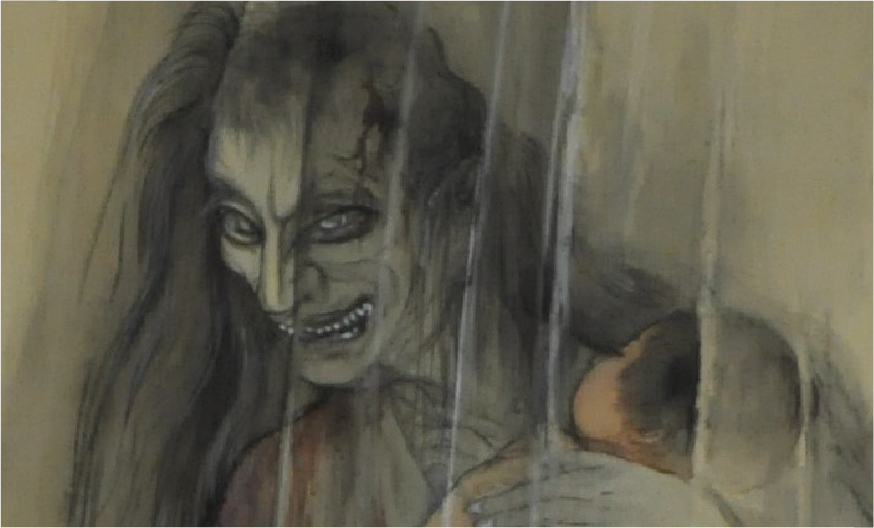

Ghost Under the Moon, ; Setsuō
雪翁「月下幽霊図」
美しさと恐怖を兼ね備えた幽霊画の傑作。満月の下に現れた痩せ細った女性の幽霊。周囲には真っ赤な曼珠沙華と白いどくだみが咲き誇り、そのなかの一本の曼珠沙華の茎が折れているのが、不吉な暗示を感じさせる。月にかかる雲のぼかしや花・葉に施された金泥のたらし込みなど、多彩な様式が取り入れられたこの幽霊画は現代の美術愛好家たちからも高い評価を得ている。怖く、儚く、美しい。幽霊画の三大要素が、この一幅に見事に表現されている。
A hauntingly beautiful work that fuses elegance and fear: beneath a full moon, a gaunt female ghost stands surrounded by crimson spider lilies and pale dokudami flowers bloom around her, one spider lily stalk broken—a dark omen. With moonlit clouds drifting past and gold flecks shimmering on leaves and petals, the artist’s rich textures and techniques captivate viewers even to this day. Terrifying, ephemeral, and beautiful, this scroll embodies all three core elements of the ghost painting tradition.


閲覧中の特集はこちら
